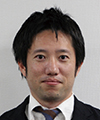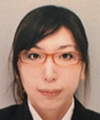 |
|||||||||||||||||||||||||||
|
|
|||||||||||||||||||||||||||
|
Global Standardization Activities Vol. 14, No. 5, pp. 56–61, May 2016. https://doi.org/10.53829/ntr201605gls Standardization Activities at W3C TPAC 2015AbstractThe World Wide Web Consortium Technical Plenary / Advisory Committee Meetings Week 2015 (W3C TPAC 2015) was held from October 26 to 30, 2015 in Sapporo, Japan, marking the first TPAC meeting held in this country. This article reports on W3C TPAC 2015 with a focus on NTT Group standardization activities in TPAC. Keywords: W3C TPAC, digital signage, blockchain, vertical writing mode 1. IntroductionThe World Wide Web Consortium (W3C) is an international industry-academia joint consortium whose members aim to standardize and promote web technologies. It holds an annual meeting in the form of the Technical Plenary / Advisory Committee Meetings Week (TPAC), which includes both a plenary session and standardization meetings by Working Groups (WGs) over a one-week period. TPAC 2015 brought together 580 participants from 14 countries at the Sapporo Convention Center in the largest-ever TPAC meeting. Various events were also held in addition to the usual technical meetings. One such event was a special panel discussion featuring Sir Tim Berners-Lee, inventor of the World Wide Web and founder of W3C, Dr. Vinton Cerf, a Transmission Control Protocol (TCP)/Internet Protocol (IP) designer known as one of the fathers of the Internet, and Professor Jun Murai of Keio University, who is referred to as the Internet Samurai. Demonstrations related to digital signage, television (TV), the Web of Things*1, and automotive topics were also presented by more than 25 member companies in a specially established demonstration area.
2. Standardization activities at TPACThe W3C WGs normally hold discussions via mailing lists and pursue their work individually. TPAC enables these WGs to come together for face-to-face meetings [1]. Furthermore, as in TPAC meetings in recent years, breakout sessions were held in an unconference style on the day of the plenary session so that participants themselves could propose discussion themes and participate in any other sessions they found interesting. The discussion themes proposed were quite diverse, including those issues currently faced by W3C and technical areas that W3C should address in the future. At TPAC 2015, up to 13 sessions were held simultaneously in each of four time periods (each lasting 60 or 90 minutes), resulting in a total of 50 sessions. The following sections introduce the areas in which NTT has been making large contributions to standardization, namely, digital signage, blockchain application technology, and vertical writing mode. 3. Digital signageThe Web-based Signage Business Group (BG) was established in April 2012 based on a proposal from Japan. Its role is to promote the standardization of digital signage in W3C. This BG was formed to study the feasibility of general digital signage that would use web technology to control various types of displays connected to the Internet, or in other words, web-based signage. Discussions to date have resulted in the creation of a document providing use cases and requirements and profile documents (core, basic media, storage, etc.) for configuring a signage player on a web browser using HTML5*2. More recently, the establishment of a new WG for discussing problems and promoting standardization toward a web-based digital signage service was proposed. This WG would be primarily concerned with application programming interfaces (APIs) essential to the operation of such a service. At TPAC 2015, NTT organized a breakout session that was attended by a wide range of participants and clarified discussion conditions with existing WGs on the API proposals listed in Table 1 in relation to signage requirements, toward establishing this new WG. After the session, discussions on API selection were held at the BG meeting with the aim of recommending a new WG, and a general consensus on establishing a new WG was obtained in the BG.
Agreement was also reached at the BG meeting on promoting formal cooperation with the International Telecommunication Union-Telecommunication Standardization Sector (ITU-T) based on a liaison document issued from ITU-T Q14/16*3 seeking collaboration and document provision from W3C. We expect coordinated standardization between W3C and ITU-T on web-based signage to progress as we move forward.
4. Blockchain application technologyNTT also held a breakout session on the concept of content distribution utilizing blockchain technology [2], which is currently being researched at NTT Service Evolution Laboratories. The purpose of this session was to foster discussions with experts involved in standardization on the affinity of blockchain technology with the web and to raise the presence of NTT in the field of blockchain application technology. The blockchain technology discussed here is a core technology of Bitcoin*4. It enables the formation of a publicly open and highly trusted ledger (blockchain) that records all transactions. In parallel with the growing interest in Bitcoin, the robust and general-purpose characteristics of blockchain technology have led to discussions on its application to fields other than virtual currencies. NTT Service Evolution Laboratories aims to invigorate the content distribution in the web by applying blockchain technology and clarifying the right of content ownership and the issuing of user licenses. The main point of this research and development effort is to establish a method that firmly ties content itself to rights information on the blockchain since the latter manages only rights information. In the discussions at this breakout session, we received support from many of the participants for our concept to apply blockchain technology to enable a highly trusted exchange of rights even on the Open Internet, which was close to the Open Web*5 concept advocated by W3C. However, applications of blockchain technology are so novel that they have not yet found widespread acceptance. At the conclusion of this session, a proposal was made to continue discussions on a voluntary basis within a Community Group, for example.
5. Vertical writing modeThe day before TPAC 2015 got underway, a Japanese Industry Meetup event was held between members of the Cascading Style Sheet (CSS)*6 WG and representatives of Japanese publishing, e-books, and other related industries as a standardization activity concerning Japanese text layout on the web. The participants at this event discussed text composition in the Japanese writing system such as vertical writing mode, horizontal-in-vertical setting, ruby, sidelines, and line breaking rules. The content of these discussions was also reflected in the TPAC 2015 meetings. As a result, W3C members from around the world gained a better understanding of the importance and necessity of the vertical writing mode and other aspects of Japanese text layout on the web.
6. Support of TPAC 2015 meetingsAs a Gold Sponsor, the NTT Group supported TPAC 2015, and in order to contribute to the smooth operation of the meetings, it installed digital signage for guidance within the venue and provided a network infrastructure for participants. 6.1 Digital information signageNTT Service Evolution Laboratories in cooperation with related companies offered and voluntarily constructed a digital information signage system to provide guidance and information to participants at the venue. Past TPAC meetings had no digital information signage, so this was the first attempt at providing such a service. This digital information signage consisted of two types of displays—a landscape type oriented in the horizontal direction like a standard monitor, and a portrait type in which the monitor’s screen is rotated 90 degrees. The displays were installed in five locations within the venue. The role of the portrait signage was to provide meeting-related information such as schedules, rooms, and sponsors, while that of the landscape signage was to provide information related to the surrounding area such as weather reports, subway service details, and Sapporo sightseeing information and promotional videos. For both the landscape and portrait displays, this digital information signage was constructed as web-based signage that uses a web browser equipped with a TV receiver as a signage player while keeping in mind future standardization trends. Some portions of the content were presented as vertical text, as shown in Fig. 1, which is an example of a vertical writing mode other than that used in books and documents.
Additionally, in the presentation of video content, we succeeded in delivering full high-definition (HD) video by employing a multicast technique using a virtual network to minimize the load on the actual network. The delivery of full HD video did not seem to hamper participant use of the network and is therefore expected to achieve high viewer satisfaction. Despite the fact that digital information signage had not previously been provided at a TPAC venue, it was well received within the venue and was put to good use as an information provision service for participants. We therefore feel that it was fully accepted and able to contribute to the success of TPAC 2015. In addition to the above support, the NTT Strategic Business Development Division prepared a participant-oriented application (app) for meeting support that was also used by participants at TPAC 2015 (Fig. 2). This app included functions enabling users to check the meeting schedule, find venue access and venue floor maps, retrieve information using a beacon*7, and get sightseeing information for post-meeting activities. An examination of the usage data revealed that this app was used in the morning to check access to the venue and that day’s schedule and in the evening to plan activities for the following day by checking sightseeing information and other details. In the future, we would like to make this app even more convenient by linking it with other services and adding more post-meeting support functions with an eye to promoting excursions in the surrounding area.
6.2 Venue network infrastructureAs a TPAC 2015 network sponsor, NTT Communications provided network connections including the Internet connection at the venue, and as a Network Operation Center (NOC) member, it constructed and operated a Wi-Fi environment within the venue. At this TPAC, digital information signage and exhibition booths of member companies were installed for the first time, which involved various network requirements. Here, to provide a problem-free infrastructure for meetings and exhibits, a 1-Gbit/s dedicated line was used for the main line, and three FLET’S lines were prepared as backup and demonstration lines. The final number of activated access points exceeded 90. As a result, NTT Communications was able to provide a stable network during TPAC 2015. A questionnaire given at the end of this TPAC indicated that it received a high evaluation of 8.26 points out of 9 for its network infrastructure.
7. Developer meetup in SapporoA Developer Meetup in Sapporo was also held as a parallel event to TPAC 2015 in the evening on the first day of meetings at the same facility. This event was planned and carried out by NTT Communications in cooperation with W3C to provide a discussion forum for W3C members and related individuals coming for TPAC from around the world and for web developers in the Sapporo area. It included talks on the latest web developments by six Japanese and overseas web engineers with real-time English/Japanese interpretation provided by a volunteer staff member. In addition, exhibition booths set up in cooperation with companies and municipalities in the Sapporo area were bustling with activity as many participants came to visit. NTT Service Evolution Laboratories provided an exhibition on R-envTM [3], a cloud-based integrated development environment for creating interactive robot services. The aim of this exhibit was to promote the use of R-env and to obtain feedback from web engineers on the technology. Specifically, R-env has a cloud-based visual programming environment on a web browser for developing and executing applications that combine multiple devices including robots, sensors, and gadgets (Fig. 3). Participants in the meetup event were given demonstrations on creating an application linking multiple devices as well as an explanation and demonstration of a method for adding a new device to R-env. In this latter method, a device can be registered with R-env by simply using the protocol of the JSON*8 data-interchange format over WebSocket*9. Many web engineers wanted to try using R-env and expressed the hope that it would become open source software. The evaluations of the participants were taken into account, and the plan is to create more opportunities to enable even more web engineers to try out R-env. NTT Communications, meanwhile, presented two demonstrations on WebRTC*10 and received many useful comments from participants.
References
|
|||||||||||||||||||||||||||




















